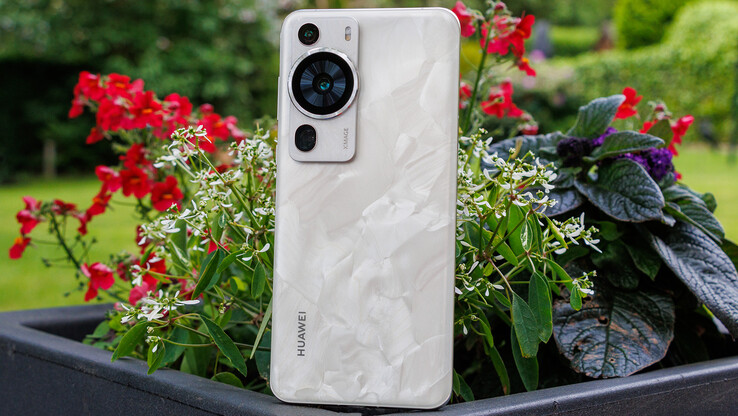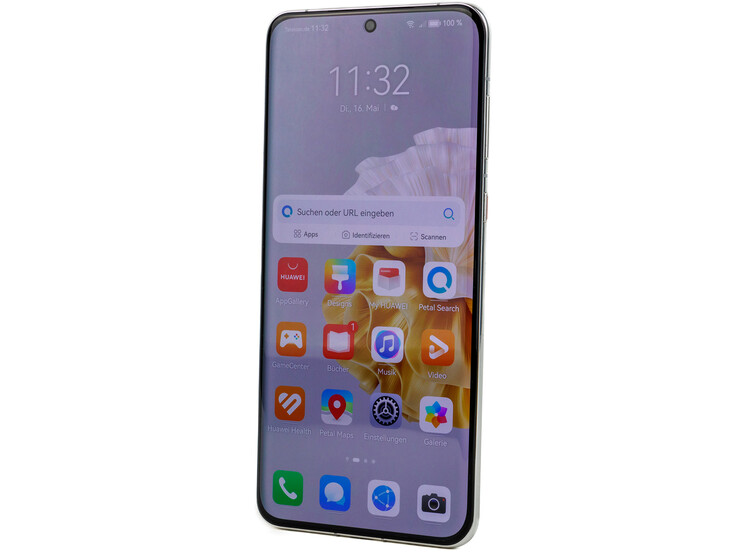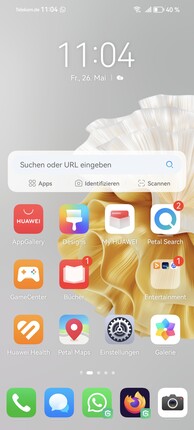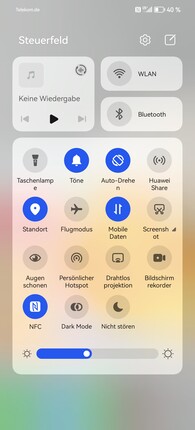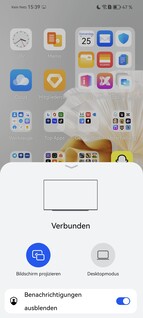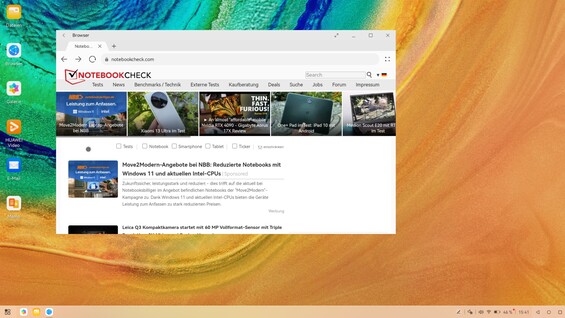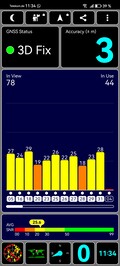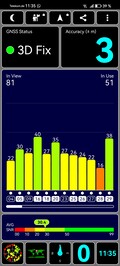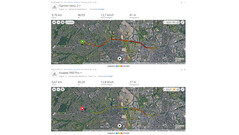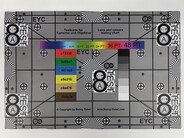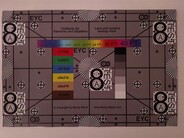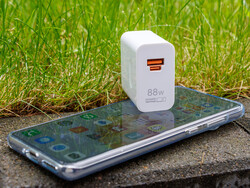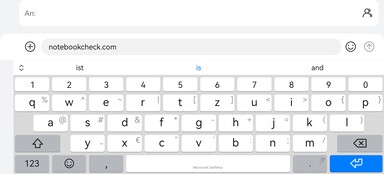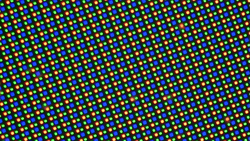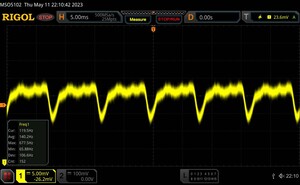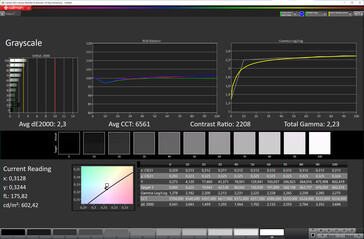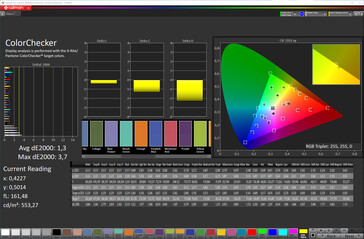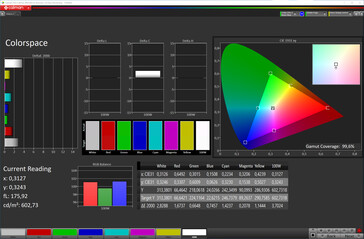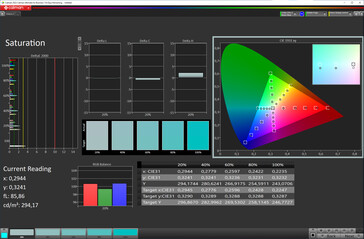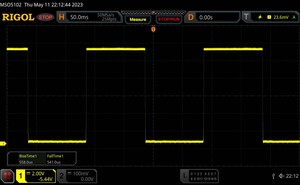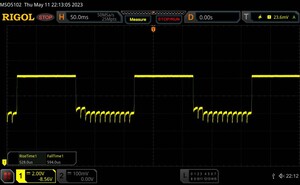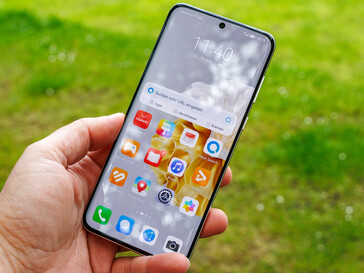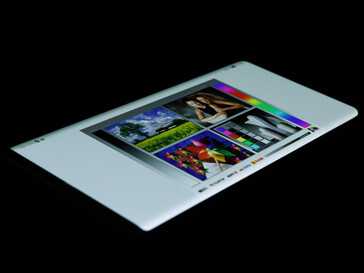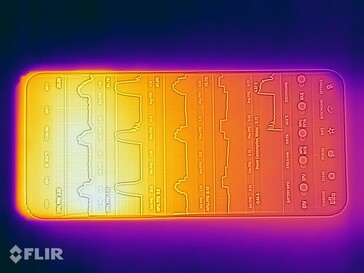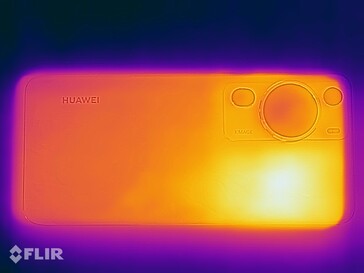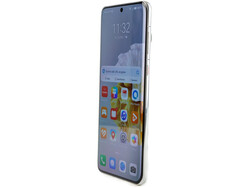Huawei P60 Pro review - A strong camera smartphone even without Leica
The Huawei P60 Pro is a direct successor to the P50 Pro and has always been the Chinese manufacturer's flagship camera smartphone. Price-wise, it sits about in the middle of the P60 series and as of currently, it is the only model of this series which is available to buy in the Western market. The P60 Art, whose features include an even better camera, a bigger battery and more storage, might follow at a later date. The Huawei P60 is still only available to purchase on the Chinese market.
The Huawei P60 Pro in both of its storage variants is available to purchase in Europe. The model with 8 GB RAM and 256 GB of internal storage is on sale for $1,179 and the one with 12/512 GB currently retails for $1,299.
The Huawei smartphone comes without Google services and 5G - the same as it has always been in the last few years. In this review, you can find out whether the phone is still worth purchasing.
possible competitors compared
Rating | Date | Model | Weight | Drive | Size | Resolution | Price |
|---|---|---|---|---|---|---|---|
| 88.8 % v7 (old) | 06 / 2023 | Huawei P60 Pro SD 8+ Gen 1, Adreno 730 | 200 g | 256 GB UFS 3.1 Flash | 6.67" | 2700x1220 | |
| 91.1 % v7 (old) | 03 / 2023 | Samsung Galaxy S23 Ultra SD 8 Gen 2 for Galaxy, Adreno 740 | 233 g | 256 GB UFS 4.0 Flash | 6.80" | 3080x1440 | |
| 90.3 % v7 (old) | 01 / 2023 | Apple iPhone 14 Pro A16, A16 GPU 5-Core | 206 g | 256 GB NVMe | 6.10" | 2556x1179 | |
| 89.2 % v7 (old) | 03 / 2023 | Xiaomi 13 Pro SD 8 Gen 2, Adreno 740 | 229 g | 256 GB UFS 4.0 Flash | 6.73" | 3200x1440 | |
| 90.1 % v7 (old) | 07 / 2023 | Honor Magic5 Pro SD 8 Gen 2, Adreno 740 | 219 g | 512 GB UFS 4.0 Flash | 6.81" | 2848x1312 | |
| 89.1 % v7 (old) | 11 / 2022 | Google Pixel 7 Pro Tensor G2, Mali-G710 MP7 | 212 g | 128 GB UFS 3.1 Flash | 6.70" | 3120x1440 |
Case - Sleek back and Kunlun glass
Outside of Asia, the Huawei P60 Pro comes in black and Rococo Pearl. Purple and green are only available in the Asian market. Our test device is in the color Rococo Pearl, which isn't quite white - instead, it has a pearlescent sheen to it, which is unique to each individual phone. Huawei apply a mineral pearlescent powder to the phones by hand - however, this technique is not further specified. This feature isn't just an eye-catcher - it is also a real joy to hold.
The display is protected by Kunlun glass - which is supposedly ten times stronger than regular glass. Even so, the phone comes with an additional screen protector installed on top. The screen is curved along all four sides - the same as could already be seen on the Honor Magic5 Pro. The phone is built very well - there are no gaps and its construction is smooth, with the exception of a tiny gap between the back and aluminum frame on our test device.
The Huawei P60 Pro is IP68-certified, meaning it is dust- and waterproof.
Connectivity - USB 3.2 and a fast microSD card reader
The Huawei P60 Pro has a fast USB 3.2 port (Gen 1) which allows for high data transfer rates. In our copying test, this port achieved transfer rates of 368.49 MB/s on average. You can also use it to output picture - you can either mirror the screen or make use of a dedicated "Desktop Mode".
Aside from this, the phone also has NFC, and IR blaster as well as Bluetooth 5.2 - though unfortunately it doesn't have an audio jack.
microSD card reader
The Huawei phone utilizes an in-house NanoMemory card slot, which supports up to 256 GB as well as exFAT. Its transfer rates were similarly fast in our copying test - although, the rates were slightly lower than expected in our Cross Platform Disk test.
| SD Card Reader - average JPG Copy Test (av. of 3 runs) | |
| Huawei P60 Pro (Huawei NanoMemory) | |
| Huawei P50 Pro (Huawei NanoMemory) | |
| Sony Xperia 1 IV (Angelbird AV Pro V60) | |
Cross Platform Disk Test (CPDT)
Software - The P60 Pro continues to miss out on Google services
In Europe, the Huawei P60 Pro comes with EMUI 13.1, which is based on Open Android. In the Asian markets, the phone utilizes Harmony OS 3.1, which isn't really built any differently and looks about the same. Huawei haven't given any detailed information on update delivery - in the past, it has always been decent. At the time of testing, the latest security patch was from 1st March 2023 - not totally up-to-date.
The same as it has been for the past few years, the P60 Pro continues to be missing Google services and the corresponding apps. Many apps will be familiar if you take a look at Huawei's AppGallery - but some of the big American ones such as Meta, Netflix and Disney are nowhere to be found. You can use the Petal search function in order to download these apps from other platforms, but for less technically proficient people, this seems like a massive hassle. A better alternative could be GBox, which is easy to install and makes the Play Store available to use - meaning you also have the option to get ahold of a lot of Google services. Unfortunately, this can lead to higher battery consumption and you have to be a little wary of data protection when utilizing this route.
Communication and GNSS - The Huawei smartphone without 5G
The Huawei P60 Pro supports Wi-Fi 6 with VHT160, which means it can utilize 2.4 and 5.0 GHz frequencies - but not 6.0 GHz. Connection via our reference router, the Asus ROG Rapture GT-AXE11000, was stable - but speeds lay behind our expectations. We would have expected speeds of over 1 GBit/s with regard to the phone's specs.
Using mobile data, the best you can get is LTE, but still no 5G. Its frequency coverage is quite good, though, which means you can make use of the phone all around the globe.
| Networking | |
| Huawei P60 Pro | |
| iperf3 receive AXE11000 | |
| iperf3 transmit AXE11000 | |
| Samsung Galaxy S23 Ultra | |
| iperf3 receive AXE11000 | |
| iperf3 transmit AXE11000 | |
| iperf3 transmit AXE11000 6GHz | |
| iperf3 receive AXE11000 6GHz | |
| Apple iPhone 14 Pro | |
| iperf3 receive AXE11000 | |
| iperf3 transmit AXE11000 | |
| Xiaomi 13 Pro | |
| iperf3 receive AXE11000 | |
| iperf3 transmit AXE11000 | |
| iperf3 transmit AXE11000 6GHz | |
| iperf3 receive AXE11000 6GHz | |
| Honor Magic5 Pro | |
| iperf3 receive AXE11000 | |
| iperf3 transmit AXE11000 | |
| Google Pixel 7 Pro | |
| iperf3 receive AXE11000 | |
| iperf3 transmit AXE11000 | |
| iperf3 transmit AXE11000 6GHz | |
| iperf3 receive AXE11000 6GHz | |
| Huawei P50 Pro | |
| iperf3 receive AXE11000 | |
| iperf3 transmit AXE11000 | |
| Average of class Smartphone | |
| iperf3 receive AXE11000 | |
| iperf3 transmit AXE11000 | |
| iperf3 transmit AXE11000 6GHz | |
| iperf3 receive AXE11000 6GHz | |
The Huawei P60 Pro is the first smartphone which supports the GNSS bands E5b (Galileo) and B2b (BeiDou). Locating via satellite is fast and a precise location is quickly determined.
We compared the phone with a Garmin Venu 2 on a bike trip. On our 10-kilometre long journey, both devices were used 90 metres apart - we noted that the P60 Pro wasn't quite able to trace our exact route as well as the fitness smartwatch, even with its much wider GNSS support. Even so, it still did a pretty good job at the end of the day.
Telephone features and call quality
The Huawei P60 Pro supports functions such as VoLTE and WLAN calls - an SIP account control was not implemented into the system.
Call quality is very good with the phone held up to your ear and louder ambient noises are effectively filtered out. Loudspeaker mode also made a good impression - it echoed a bit at times though.
Cameras - The P60 Pro with one lens fewer
The Huawei P60 Pro's front-facing camera takes good selfies with a customizable bokeh which distinguishes the line between subject and background well.
While the P50 Pro featured a quad-camera, the P60 Pro has one lens fewer and got rid of the monochrome sensor entirely. Its main camera impresses with its balanced photos - the phone doesn't over-sharpen subjects too much and the photos have a nice dynamic. Low-light photography is also possible, but it outlines subjects a little too harshly at times. The P60 Pro also features automatic aperture control, which automatically sets the aperture between f/1.4 and f/4.0. You can manually control this feature via Pro Mode - a feature which we already know well from the Mate50 Pro.
The smartphone's ultra-wide angle lens is one of the better ones, even though it only has access to 12 MPix - it achieves lovely depth of field and good levels of detail. The periscope camera not only has access to high resolutions, it is also very light-sensitive with an aperture of f/2.1. It has an 100x digital zoom, but hit isn't exactly the best. From around 10x zoom you already start to notice quite a few deficits - nevertheless, good enough for social media.
You can record video on both the front-facing and main camera at a maximum of Ultra HD and 60 FPS, as long as you take them in 16:9 format. If you want to record in 21:9, you are limited to Full HD (60 FPS). HDR videos can be recorded using all resolutions and formats, however, they are limited to 30 FPS.
Photos utilizing different levels of zoom
Image comparison
Choose a scene and navigate within the first image. One click changes the position on touchscreens. One click on the zoomed-in image opens the original in a new window. The first image shows the scaled photograph of the test device.
Main cameraMain cameraUltra-wide angle5x zoomLow light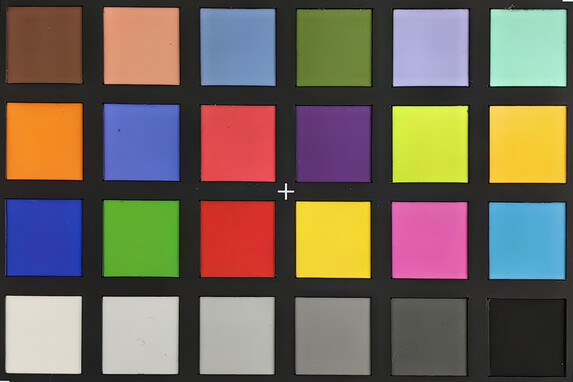
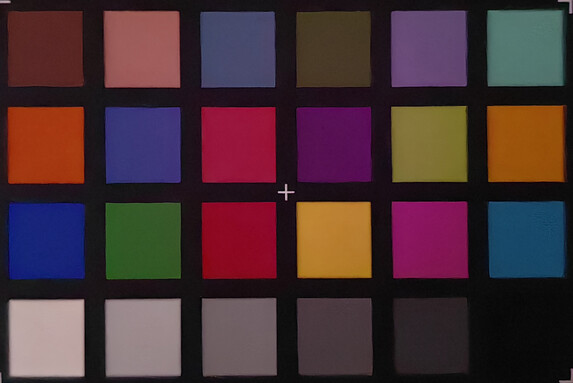
Accessories and warranty - including a fast-charging adapter
The Huawei P60 Pro comes with a modular 88-watt power adapter, a USB cable (Type-A to Type-C), a SIM card tool and a transparent silicone case. The charging adapter has a USB-A and USB-C port - but only one port can be used to charge the device at a time.
The Huawei phone comes with a 24-month warranty which can't be extended.
Input devices and operation - The P60 Pro has an optical fingerprint sensor
The phone's capacitive touchscreen comes with a pre-fitted screen protector and has a high sampling rate of up to 300 Hz. This makes inputs smooth and precise. Its gliding properties remain good, even with the applied screen protector.
The P60 Pro supports a variety of gestures and smart features such as knuckle gestures, double tapping the screen to wake it, and a one-handed mode. Its linear vibration motor (z axis) releases subtle but exact haptic feedback.
An optical fingerprint sensor is responsible for biometric security - it recognizes fingerprints reliably and unlocks the phone quickly. You can additionally (or alternatively) activate facial recognition using the front-facing camera, which works quickly and can even be used in the dark - although it is slightly less secure.
Display - A bright 120-Hz OLED screen
The Huawei P60 Pro's screen continues to rely on LTPO OLED technology with an expanded Full HD resolution, which gives it great levels of sharpness. Its refresh rates are automatically set by the system and range between 1 and 120 Hz. The HDR standards HLG, HDR10 and HDR10+ are supported.
The screen's brightness is greatly improved compared to the phone's predecessor and when the screen is fully white, it achieves a maximum brightness of 1,188 cd/m² - as long as the ambient light sensor is activated. In manual mode, it achieves rates of 612 cd/m². With an even distribution of light and dark areas (APL18), these rates are barely any higher at 1,233 cd/m².
The P60 Pro's panel supports PWM dimming at 1,440 Hz, which should reduce the strain on sensitive users by quite a bit. Using an oscilloscope, we were still able to measure a relatively constant frequency of 120 Hz - although this could be because of a possible screen burn protection or black frame insertion.
| |||||||||||||||||||||||||
Brightness Distribution: 98 %
Center on Battery: 1188 cd/m²
Contrast: ∞:1 (Black: 0 cd/m²)
ΔE ColorChecker Calman: 1.3 | ∀{0.5-29.43 Ø4.77}
ΔE Greyscale Calman: 2.3 | ∀{0.09-98 Ø5}
99.6% sRGB (Calman 2D)
Gamma: 2.23
CCT: 6561 K
| Huawei P60 Pro OLED, 2700x1220, 6.7" | Samsung Galaxy S23 Ultra Dynamic AMOLED 2x, 3080x1440, 6.8" | Apple iPhone 14 Pro Super Retina XDR OLED, 2556x1179, 6.1" | Xiaomi 13 Pro OLED, 3200x1440, 6.7" | Honor Magic5 Pro OLED, 2848x1312, 6.8" | Google Pixel 7 Pro OLED, 3120x1440, 6.7" | Huawei P50 Pro OLED, 2700x1228, 6.6" | |
|---|---|---|---|---|---|---|---|
| Screen | -14% | 4% | 12% | -10% | 17% | -0% | |
| Brightness middle (cd/m²) | 1188 | 1117 -6% | 1046 -12% | 1230 4% | 1291 9% | 1022 -14% | 765 -36% |
| Brightness (cd/m²) | 1189 | 1133 -5% | 1049 -12% | 1244 5% | 1289 8% | 1025 -14% | 771 -35% |
| Brightness Distribution (%) | 98 | 97 -1% | 98 0% | 94 -4% | 96 -2% | 99 1% | 95 -3% |
| Black Level * (cd/m²) | |||||||
| Colorchecker dE 2000 * | 1.3 | 2.2 -69% | 1.2 8% | 1 23% | 1.7 -31% | 0.9 31% | 1.2 8% |
| Colorchecker dE 2000 max. * | 3.7 | 3.9 -5% | 3.1 16% | 2.8 24% | 4.4 -19% | 2.1 43% | 2.6 30% |
| Greyscale dE 2000 * | 2.3 | 2.3 -0% | 1.7 26% | 1.8 22% | 2.9 -26% | 1.1 52% | 1.5 35% |
| Gamma | 2.23 99% | 2.37 93% | 2.19 100% | 2.24 98% | 2.28 96% | 2.22 99% | 2.21 100% |
| CCT | 6561 99% | 6572 99% | 6538 99% | 6446 101% | 6472 100% | 6650 98% | 6446 101% |
* ... smaller is better
Screen Flickering / PWM (Pulse-Width Modulation)
| Screen flickering / PWM detected | 120 Hz | ||
The display backlight flickers at 120 Hz (worst case, e.g., utilizing PWM) . The frequency of 120 Hz is very low, so the flickering may cause eyestrain and headaches after extended use. In comparison: 53 % of all tested devices do not use PWM to dim the display. If PWM was detected, an average of 8084 (minimum: 5 - maximum: 343500) Hz was measured. | |||
Measurement series with fixed zoom level and different brightness settings.
Ex works, the Huawei P60 Pro has quite natural color depiction, which we used as a base for our measurements. Gray tones are depicted very accurately and only start to show deviations in the lightest shades. Color deviations are so minimal that they can't even be seen with the naked eye.
Display Response Times
| ↔ Response Time Black to White | ||
|---|---|---|
| 1.1 ms ... rise ↗ and fall ↘ combined | ↗ 0.558 ms rise | |
| ↘ 0.541 ms fall | ||
| The screen shows very fast response rates in our tests and should be very well suited for fast-paced gaming. In comparison, all tested devices range from 0.1 (minimum) to 240 (maximum) ms. » 4 % of all devices are better. This means that the measured response time is better than the average of all tested devices (20.2 ms). | ||
| ↔ Response Time 50% Grey to 80% Grey | ||
| 1.12 ms ... rise ↗ and fall ↘ combined | ↗ 0.528 ms rise | |
| ↘ 0.594 ms fall | ||
| The screen shows very fast response rates in our tests and should be very well suited for fast-paced gaming. In comparison, all tested devices range from 0.165 (minimum) to 636 (maximum) ms. » 4 % of all devices are better. This means that the measured response time is better than the average of all tested devices (31.6 ms). | ||
Even though the Huawei P60 Pro can't quite keep up with the Galaxy S23 Ultra or the iPhone 14 Pro in terms of screen brightness, it is definitely still more than sufficient to remain legible on sunny days.
The Huawei phone's viewing angle stability is also great - if anything, we noticed a slight dip in brightness and slightly warmer color depiction with the phone held at very flat angles.
Performance - The Huawei smartphone with a fast Snapdragon 8+ Gen 1 processor
The Huawei P60 Pro relies on the Snapdragon 8+ Gen 1 4G with 8 or 12 GB RAM. Its pure CPU speed is just over average compared to the smartphones we tested which have this SoC - but it clearly loses out to the phones that already make use of the succeeding generation's chipset.
Its UFS 3.1 storage is also very fast and can can compete with many competitors with UFS 4.0 when it comes to writing small data blocks.
| UL Procyon AI Inference for Android - Overall Score NNAPI | |
| Sony Xperia 1 IV | |
| Average Qualcomm Snapdragon 8+ Gen 1 (3291 - 84787, n=21) | |
| Google Pixel 7 Pro | |
| Average of class Smartphone (3769 - 81594, n=132, last 2 years) | |
| Samsung Galaxy S23 Ultra | |
| Xiaomi 13 Pro | |
| Huawei P60 Pro | |
| Honor Magic5 Pro | |
The phone's integrated Adreno 730 impressed during the graphics benchmarks - however, a lot of its competitors outperformed this device due to them already using the newer Adreno 740.
At the end of the day, the phone still has more than enough power to run more demanding games and cope with other complex graphic calculations.
GFXBench (DX / GLBenchmark) 2.7: T-Rex Onscreen | 1920x1080 T-Rex Offscreen
GFXBench 3.0: on screen Manhattan Onscreen OGL | 1920x1080 1080p Manhattan Offscreen
GFXBench 3.1: on screen Manhattan ES 3.1 Onscreen | 1920x1080 Manhattan ES 3.1 Offscreen
GFXBench: on screen Car Chase Onscreen | 1920x1080 Car Chase Offscreen | on screen Aztec Ruins High Tier Onscreen | 2560x1440 Aztec Ruins High Tier Offscreen | on screen Aztec Ruins Normal Tier Onscreen | 1920x1080 Aztec Ruins Normal Tier Offscreen | 3840x2160 4K Aztec Ruins High Tier Offscreen
| 3DMark / Wild Life Extreme Unlimited | |
| Samsung Galaxy S23 Ultra | |
| Xiaomi 13 Pro | |
| Honor Magic5 Pro | |
| Apple iPhone 14 Pro | |
| Huawei P60 Pro | |
| Google Pixel 7 Pro | |
| Huawei P50 Pro | |
| 3DMark / Wild Life Extreme | |
| Xiaomi 13 Pro | |
| Samsung Galaxy S23 Ultra | |
| Honor Magic5 Pro | |
| Apple iPhone 14 Pro | |
| Huawei P60 Pro | |
| Google Pixel 7 Pro | |
| Huawei P50 Pro | |
| 3DMark / Wild Life Unlimited Score | |
| Samsung Galaxy S23 Ultra | |
| Xiaomi 13 Pro | |
| Honor Magic5 Pro | |
| Apple iPhone 14 Pro | |
| Huawei P60 Pro | |
| Google Pixel 7 Pro | |
| Huawei P50 Pro | |
| 3DMark / Wild Life Score | |
| Google Pixel 7 Pro | |
| Huawei P50 Pro | |
| Honor Magic5 Pro | |
| 3DMark / Sling Shot Extreme (ES 3.1) Unlimited Physics | |
| Samsung Galaxy S23 Ultra | |
| Honor Magic5 Pro | |
| Huawei P60 Pro | |
| Huawei P50 Pro | |
| Google Pixel 7 Pro | |
| 3DMark / Sling Shot Extreme (ES 3.1) Unlimited Graphics | |
| Honor Magic5 Pro | |
| Samsung Galaxy S23 Ultra | |
| Huawei P60 Pro | |
| Huawei P50 Pro | |
| Google Pixel 7 Pro | |
| 3DMark / Sling Shot Extreme (ES 3.1) Unlimited | |
| Honor Magic5 Pro | |
| Samsung Galaxy S23 Ultra | |
| Huawei P60 Pro | |
| Huawei P50 Pro | |
| Google Pixel 7 Pro | |
| GFXBench (DX / GLBenchmark) 2.7 / T-Rex Onscreen | |
| Huawei P50 Pro | |
| Google Pixel 7 Pro | |
| Xiaomi 13 Pro | |
| Samsung Galaxy S23 Ultra | |
| Apple iPhone 14 Pro | |
| Honor Magic5 Pro | |
| Huawei P60 Pro | |
| GFXBench (DX / GLBenchmark) 2.7 / T-Rex Offscreen | |
| Xiaomi 13 Pro | |
| Samsung Galaxy S23 Ultra | |
| Honor Magic5 Pro | |
| Apple iPhone 14 Pro | |
| Huawei P60 Pro | |
| Huawei P50 Pro | |
| Google Pixel 7 Pro | |
| GFXBench 3.0 / Manhattan Onscreen OGL | |
| Xiaomi 13 Pro | |
| Samsung Galaxy S23 Ultra | |
| Huawei P50 Pro | |
| Google Pixel 7 Pro | |
| Apple iPhone 14 Pro | |
| Honor Magic5 Pro | |
| Huawei P60 Pro | |
| GFXBench 3.0 / 1080p Manhattan Offscreen | |
| Xiaomi 13 Pro | |
| Apple iPhone 14 Pro | |
| Samsung Galaxy S23 Ultra | |
| Honor Magic5 Pro | |
| Huawei P60 Pro | |
| Google Pixel 7 Pro | |
| Huawei P50 Pro | |
| GFXBench 3.1 / Manhattan ES 3.1 Onscreen | |
| Xiaomi 13 Pro | |
| Samsung Galaxy S23 Ultra | |
| Huawei P50 Pro | |
| Apple iPhone 14 Pro | |
| Honor Magic5 Pro | |
| Huawei P60 Pro | |
| Google Pixel 7 Pro | |
| GFXBench 3.1 / Manhattan ES 3.1 Offscreen | |
| Xiaomi 13 Pro | |
| Honor Magic5 Pro | |
| Apple iPhone 14 Pro | |
| Samsung Galaxy S23 Ultra | |
| Huawei P60 Pro | |
| Google Pixel 7 Pro | |
| Huawei P50 Pro | |
| GFXBench / Car Chase Onscreen | |
| Samsung Galaxy S23 Ultra | |
| Xiaomi 13 Pro | |
| Apple iPhone 14 Pro | |
| Honor Magic5 Pro | |
| Huawei P60 Pro | |
| Google Pixel 7 Pro | |
| Huawei P50 Pro | |
| GFXBench / Car Chase Offscreen | |
| Xiaomi 13 Pro | |
| Honor Magic5 Pro | |
| Samsung Galaxy S23 Ultra | |
| Apple iPhone 14 Pro | |
| Huawei P60 Pro | |
| Google Pixel 7 Pro | |
| Huawei P50 Pro | |
| GFXBench / Aztec Ruins High Tier Onscreen | |
| Samsung Galaxy S23 Ultra | |
| Apple iPhone 14 Pro | |
| Honor Magic5 Pro | |
| Huawei P60 Pro | |
| Xiaomi 13 Pro | |
| Huawei P50 Pro | |
| Google Pixel 7 Pro | |
| GFXBench / Aztec Ruins High Tier Offscreen | |
| Honor Magic5 Pro | |
| Samsung Galaxy S23 Ultra | |
| Xiaomi 13 Pro | |
| Huawei P60 Pro | |
| Apple iPhone 14 Pro | |
| Google Pixel 7 Pro | |
| Huawei P50 Pro | |
| GFXBench / Aztec Ruins Normal Tier Onscreen | |
| Samsung Galaxy S23 Ultra | |
| Xiaomi 13 Pro | |
| Apple iPhone 14 Pro | |
| Honor Magic5 Pro | |
| Huawei P60 Pro | |
| Huawei P50 Pro | |
| Google Pixel 7 Pro | |
| GFXBench / Aztec Ruins Normal Tier Offscreen | |
| Xiaomi 13 Pro | |
| Samsung Galaxy S23 Ultra | |
| Apple iPhone 14 Pro | |
| Huawei P60 Pro | |
| Honor Magic5 Pro | |
| Google Pixel 7 Pro | |
| Huawei P50 Pro | |
| GFXBench / 4K Aztec Ruins High Tier Offscreen | |
| Samsung Galaxy S23 Ultra | |
| Honor Magic5 Pro | |
| Xiaomi 13 Pro | |
| Apple iPhone 14 Pro | |
| Huawei P60 Pro | |
| Google Pixel 7 Pro | |
| Jetstream 2 - 2.0 Total Score | |
| Apple iPhone 14 Pro (Safari 16) | |
| Samsung Galaxy S23 Ultra (Chrome 109) | |
| Average of class Smartphone (23.8 - 387, n=147, last 2 years) | |
| Xiaomi 13 Pro (Chrome 109) | |
| Average Qualcomm Snapdragon 8+ Gen 1 (76.2 - 204, n=23) | |
| Honor Magic5 Pro (Chrome 111) | |
| Huawei P60 Pro (Huawei Browser 13.0.4) | |
| Google Pixel 7 Pro (Chrome 106) | |
| Speedometer 2.0 - Result 2.0 | |
| Apple iPhone 14 Pro (Safari 16) | |
| Average of class Smartphone (15.2 - 643, n=119, last 2 years) | |
| Samsung Galaxy S23 Ultra (Chrome 109) | |
| Average Qualcomm Snapdragon 8+ Gen 1 (69.1 - 196, n=18) | |
| Honor Magic5 Pro (Chrome 111) | |
| Xiaomi 13 Pro (Chrome 109) | |
| Google Pixel 7 Pro (Chrome 106) | |
| Huawei P60 Pro (Huawei Browser 13.0.4) | |
| WebXPRT 4 - Overall | |
| Apple iPhone 14 Pro (Safari 16) | |
| Xiaomi 13 Pro (Chrome 109) | |
| Average of class Smartphone (27 - 306, n=143, last 2 years) | |
| Samsung Galaxy S23 Ultra (Chrome 110) | |
| Average Qualcomm Snapdragon 8+ Gen 1 (69 - 159, n=21) | |
| Honor Magic5 Pro (Chrome 111) | |
| Huawei P60 Pro (Huawei Browser 13.0.4) | |
| Google Pixel 7 Pro (Chrome 106) | |
| WebXPRT 3 - Overall | |
| Apple iPhone 14 Pro (Safari 16) | |
| Average of class Smartphone (38 - 380, n=30, last 2 years) | |
| Average Qualcomm Snapdragon 8+ Gen 1 (106 - 224, n=14) | |
| Huawei P50 Pro (Huawei Browser 12) | |
| Google Pixel 7 Pro (Chrome 106) | |
| Octane V2 - Total Score | |
| Apple iPhone 14 Pro (Safari 16) | |
| Samsung Galaxy S23 Ultra (Chrome 109) | |
| Huawei P60 Pro (Huawei Browser 13.0.4) | |
| Average of class Smartphone (2228 - 126661, n=194, last 2 years) | |
| Google Pixel 7 Pro (Chrome 106) | |
| Xiaomi 13 Pro (Chrome 109) | |
| Average Qualcomm Snapdragon 8+ Gen 1 (17622 - 61536, n=24) | |
| Honor Magic5 Pro (Chrome 111) | |
| Huawei P50 Pro (Huawei Browser 12) | |
| Mozilla Kraken 1.1 - Total | |
| Huawei P50 Pro (Huawei Browser 12) | |
| Average of class Smartphone (257 - 28190, n=154, last 2 years) | |
| Average Qualcomm Snapdragon 8+ Gen 1 (665 - 1707, n=22) | |
| Google Pixel 7 Pro (Chrome 106) | |
| Honor Magic5 Pro (Chrome 111) | |
| Huawei P60 Pro (Huawei Browser 13.0.4) | |
| Xiaomi 13 Pro (Chrome 109) | |
| Samsung Galaxy S23 Ultra (Chrome 109) | |
| Apple iPhone 14 Pro (Safari 16) | |
* ... smaller is better
| Huawei P60 Pro | Samsung Galaxy S23 Ultra | Xiaomi 13 Pro | Honor Magic5 Pro | Google Pixel 7 Pro | Huawei P50 Pro | Average 256 GB UFS 3.1 Flash | Average of class Smartphone | |
|---|---|---|---|---|---|---|---|---|
| AndroBench 3-5 | 11% | 48% | 23% | -38% | -26% | -18% | 1% | |
| Sequential Read 256KB (MB/s) | 2012.83 | 3426.56 70% | 3587.83 78% | 3344.12 66% | 1346.78 -33% | 1836 -9% | 1757 ? -13% | 2235 ? 11% |
| Sequential Write 256KB (MB/s) | 1519.82 | 1389.84 -9% | 2601.45 71% | 2651.87 74% | 874.73 -42% | 755 -50% | 1204 ? -21% | 1871 ? 23% |
| Random Read 4KB (MB/s) | 296.39 | 449.77 52% | 387.72 31% | 267.91 -10% | 219.01 -26% | 269.3 -9% | 287 ? -3% | 297 ? 0% |
| Random Write 4KB (MB/s) | 496.39 | 152.92 -69% | 546.98 10% | 298.31 -40% | 253.18 -49% | 329.6 -34% | 318 ? -36% | 343 ? -31% |
Emissions - weak SoC cooling
Temperature
In idle mode, the P60 Pro's surface temperatures remain relatively low, but under load, they quickly surpass the 40° C mark across the whole of the phone's surface. Although, it should be noted that we used the Burnout benchmark for the P60's measurements - it is much more demanding than the Stability test, which we used on other smartphones.
During the 3DMark stress test, however, the P60 Pro showed weak cooling performance that struggled to keep the Qualcomm chipset under control. We repeatedly saw performance losses of up to 64 per cent.
(-) The maximum temperature on the upper side is 47.6 °C / 118 F, compared to the average of 35.2 °C / 95 F, ranging from 21.9 to 247 °C for the class Smartphone.
(±) The bottom heats up to a maximum of 44.5 °C / 112 F, compared to the average of 34 °C / 93 F
(+) In idle usage, the average temperature for the upper side is 30.4 °C / 87 F, compared to the device average of 32.9 °C / 91 F.
3DMark Wild Life Stress Test
| 3DMark | |
| Wild Life Stress Test Stability | |
| Xiaomi 13 Pro | |
| Apple iPhone 14 Pro | |
| Samsung Galaxy S23 Ultra | |
| Google Pixel 7 Pro | |
| Huawei P50 Pro | |
| Honor Magic5 Pro | |
| Huawei P60 Pro | |
| Wild Life Extreme Stress Test | |
| Xiaomi 13 Pro | |
| Google Pixel 7 Pro | |
| Apple iPhone 14 Pro | |
| Samsung Galaxy S23 Ultra | |
| Huawei P50 Pro | |
| Honor Magic5 Pro | |
| Huawei P60 Pro | |
Speakers
The Huawei phone's two speakers create quite a pleasant sound - as long as they are not set too loud. Here, the highs are a little too extreme and the sound becomes a bit hollow.
The Bluetooth audio codecs do not include those from Qualcomm. Users who want to utilize high-res streaming have to resort to using LDAC or Huawei's own L2HC codec. However, the latter is only supported by the FreeBuds Studio.
Huawei P60 Pro audio analysis
(+) | speakers can play relatively loud (89.1 dB)
Bass 100 - 315 Hz
(-) | nearly no bass - on average 15.7% lower than median
(±) | linearity of bass is average (9% delta to prev. frequency)
Mids 400 - 2000 Hz
(±) | higher mids - on average 5% higher than median
(+) | mids are linear (4.2% delta to prev. frequency)
Highs 2 - 16 kHz
(±) | higher highs - on average 7.3% higher than median
(+) | highs are linear (4.4% delta to prev. frequency)
Overall 100 - 16.000 Hz
(±) | linearity of overall sound is average (16% difference to median)
Compared to same class
» 5% of all tested devices in this class were better, 4% similar, 91% worse
» The best had a delta of 11%, average was 35%, worst was 134%
Compared to all devices tested
» 24% of all tested devices were better, 5% similar, 70% worse
» The best had a delta of 4%, average was 24%, worst was 134%
Google Pixel 7 Pro audio analysis
(+) | speakers can play relatively loud (88.4 dB)
Bass 100 - 315 Hz
(-) | nearly no bass - on average 17.4% lower than median
(±) | linearity of bass is average (13% delta to prev. frequency)
Mids 400 - 2000 Hz
(+) | balanced mids - only 3.8% away from median
(+) | mids are linear (6.7% delta to prev. frequency)
Highs 2 - 16 kHz
(±) | higher highs - on average 8.8% higher than median
(±) | linearity of highs is average (9% delta to prev. frequency)
Overall 100 - 16.000 Hz
(±) | linearity of overall sound is average (16.8% difference to median)
Compared to same class
» 9% of all tested devices in this class were better, 7% similar, 85% worse
» The best had a delta of 11%, average was 35%, worst was 134%
Compared to all devices tested
» 29% of all tested devices were better, 7% similar, 64% worse
» The best had a delta of 4%, average was 24%, worst was 134%
Battery life - The Huawei P60 Pro with a 4,815 mAh battery
Power consumption
The Huawei P60 Pro's power consumption is slightly raised at minimum display brightness and in idle mode - at maximum manual brightness, it is actually considerably raised. The latter can at least be explained by the comparatively high brightness level. The measurements using adapted display brightness show the phone to be more frugal.
The P60 Pro can be charged using a cable at up to 88 watts, wireless charging uses up to 50 watts. The Huawei smartphone also supports reverse wireless charging.
| Off / Standby | |
| Idle | |
| Load |
|
Key:
min: | |
| Huawei P60 Pro 4815 mAh | Samsung Galaxy S23 Ultra 5000 mAh | Apple iPhone 14 Pro 3200 mAh | Xiaomi 13 Pro 4820 mAh | Honor Magic5 Pro 5100 mAh | Google Pixel 7 Pro 5000 mAh | Huawei P50 Pro 4360 mAh | Average Qualcomm Snapdragon 8+ Gen 1 | Average of class Smartphone | |
|---|---|---|---|---|---|---|---|---|---|
| Power Consumption | 23% | 33% | 17% | 30% | 25% | -8% | -3% | -9% | |
| Idle Minimum * (Watt) | 1.06 | 0.9 15% | 0.56 47% | 1.02 4% | 0.91 14% | 0.78 26% | 1.24 -17% | 1.006 ? 5% | 0.847 ? 20% |
| Idle Average * (Watt) | 2.43 | 1.05 57% | 1.37 44% | 1.36 44% | 1.63 33% | 1.61 34% | 2.14 12% | 1.834 ? 25% | 1.448 ? 40% |
| Idle Maximum * (Watt) | 2.44 | 1.1 55% | 1.42 42% | 1.58 35% | 1.67 32% | 1.63 33% | 2.2 10% | 1.984 ? 19% | 1.633 ? 33% |
| Load Average * (Watt) | 3.65 | 3.99 -9% | 3.42 6% | 4.29 -18% | 2.61 28% | 3.29 10% | 3.95 -8% | 5.68 ? -56% | 6.96 ? -91% |
| Load Maximum * (Watt) | 7.74 | 7.82 -1% | 5.56 28% | 6.15 21% | 4.57 41% | 6.01 22% | 10.45 -35% | 8.44 ? -9% | 11.3 ? -46% |
* ... smaller is better
power consumption: Geekbench (150 cd/m²)
power consumption: GFXBench (150 cd/m²)
Runtimes
At 4,815 mAh, the phone's battery is 10.4 % larger than that of its predecessor, the P50 Pro (4,360 mAh). This becomes quite noticeable when you take a look at the P60 Pro's runtimes - they are 34 per cent better and the phone managed over 13 hours in our WLAN test using adapted display brightness (150 cd/m²). In comparison, this isn't setting any new records, but it is still a very good result.
Pros
Cons
Verdict - A strong smartphone with a few lingering deficits
While the Huawei P60 Pro is technically a very good smartphone, it still continues to battle with old and increasingly more problems due to its sanctions. On a positive note, it has a modern LTPO display which runs at up to 120 Hz, is very bright and has good color accuracy. You can also charge the smartphone very quickly using a cable or by using its wireless charging function. It is also IP68-certified dust and waterproof. Furthermore, the P60 Pro is the first smartphone that supports the GNSS frequencies E5b and B2b. An awesome triple camera completes the phone's setup.
The Huawei P60 Pro is impressive in many ways - but it is missing out on a few modern radio standards as well as Google services.
The missing Google services and 5G aside, not much more is actually up-to-date about the phone. Huawei may have gone for a high-end SoC - but it is last year's model which doesn't support the 6-GHz WLAN band. The display features 1,440 Hz PWM dimming, however, the Magic5 Pro has 2,160 Hz to offer. Its screen brightness isn't quite enough for the P60 Pro to come out on top either.
Technically seen, Huawei have still manufactured a very good smartphone. Unfortunately, we can't fully recommend purchasing the device due to its missing Google services. Huawei may offer substitutes and solutions which utilize third-party services - but this will prove to be a little too convoluted for a lot of users. However, if this isn't too big an issue for you and you don't need Google Pay or Android Auto, then the P60 Pro may well prove to be a suitable alternative to the Pixel 7 Pro, Galaxy S23 Ultra and similar phones.
Price and availability
Huawei P60 Pro
- 05/30/2023 v7 (old)
Daniel Schmidt
Transparency
The selection of devices to be reviewed is made by our editorial team. The test sample was provided to the author as a loan by the manufacturer or retailer for the purpose of this review. The lender had no influence on this review, nor did the manufacturer receive a copy of this review before publication. There was no obligation to publish this review. As an independent media company, Notebookcheck is not subjected to the authority of manufacturers, retailers or publishers.
This is how Notebookcheck is testing
Every year, Notebookcheck independently reviews hundreds of laptops and smartphones using standardized procedures to ensure that all results are comparable. We have continuously developed our test methods for around 20 years and set industry standards in the process. In our test labs, high-quality measuring equipment is utilized by experienced technicians and editors. These tests involve a multi-stage validation process. Our complex rating system is based on hundreds of well-founded measurements and benchmarks, which maintains objectivity. Further information on our test methods can be found here.




